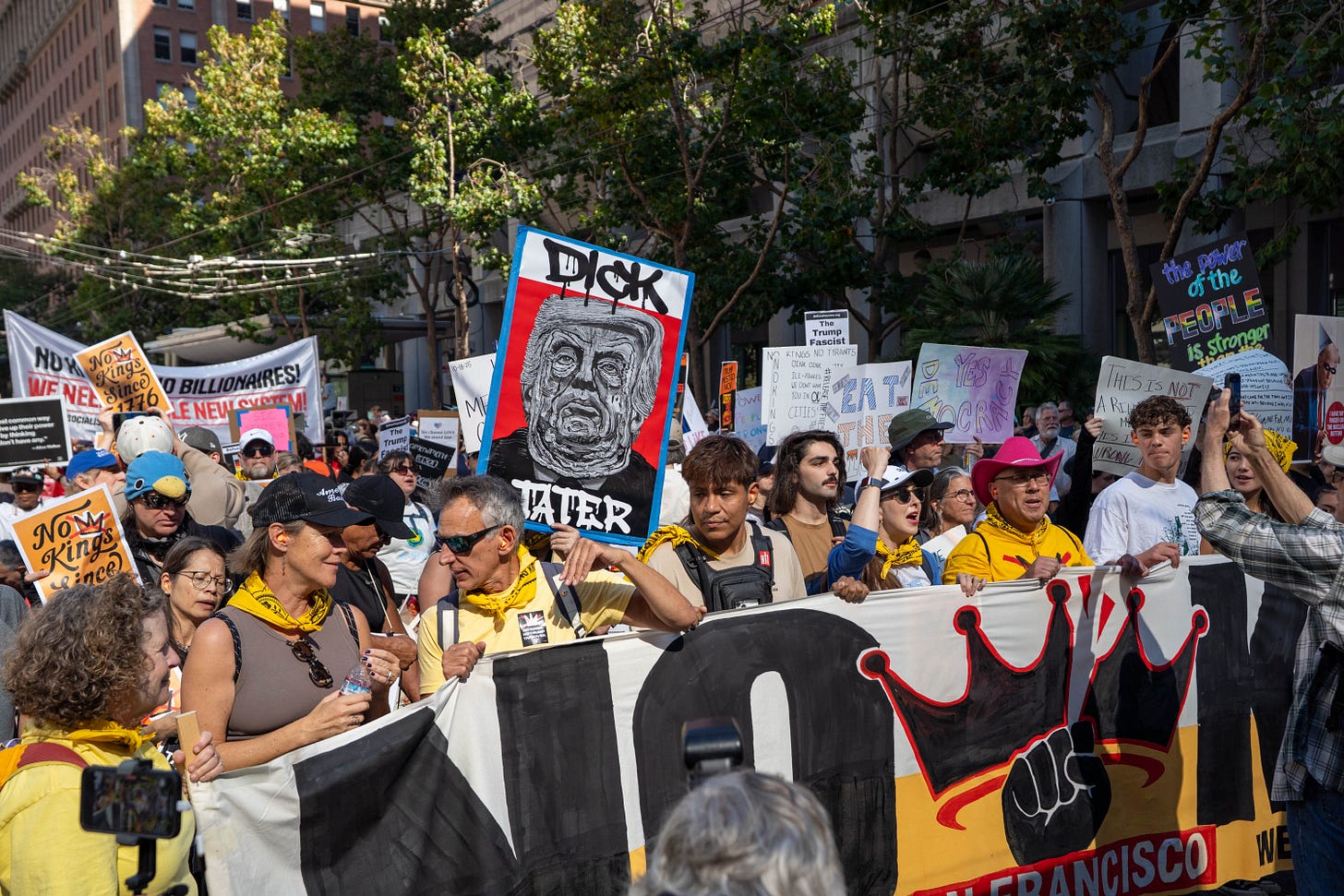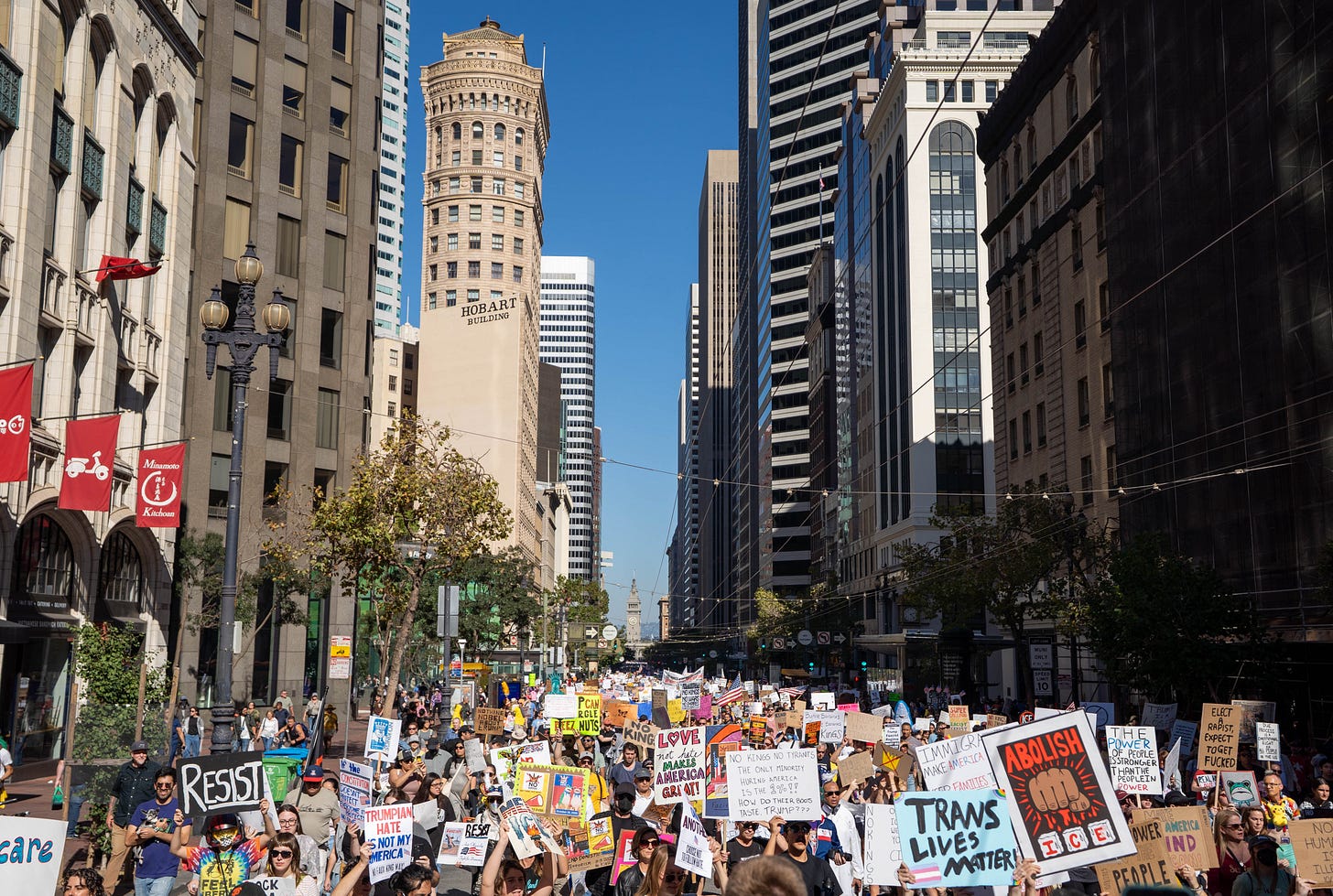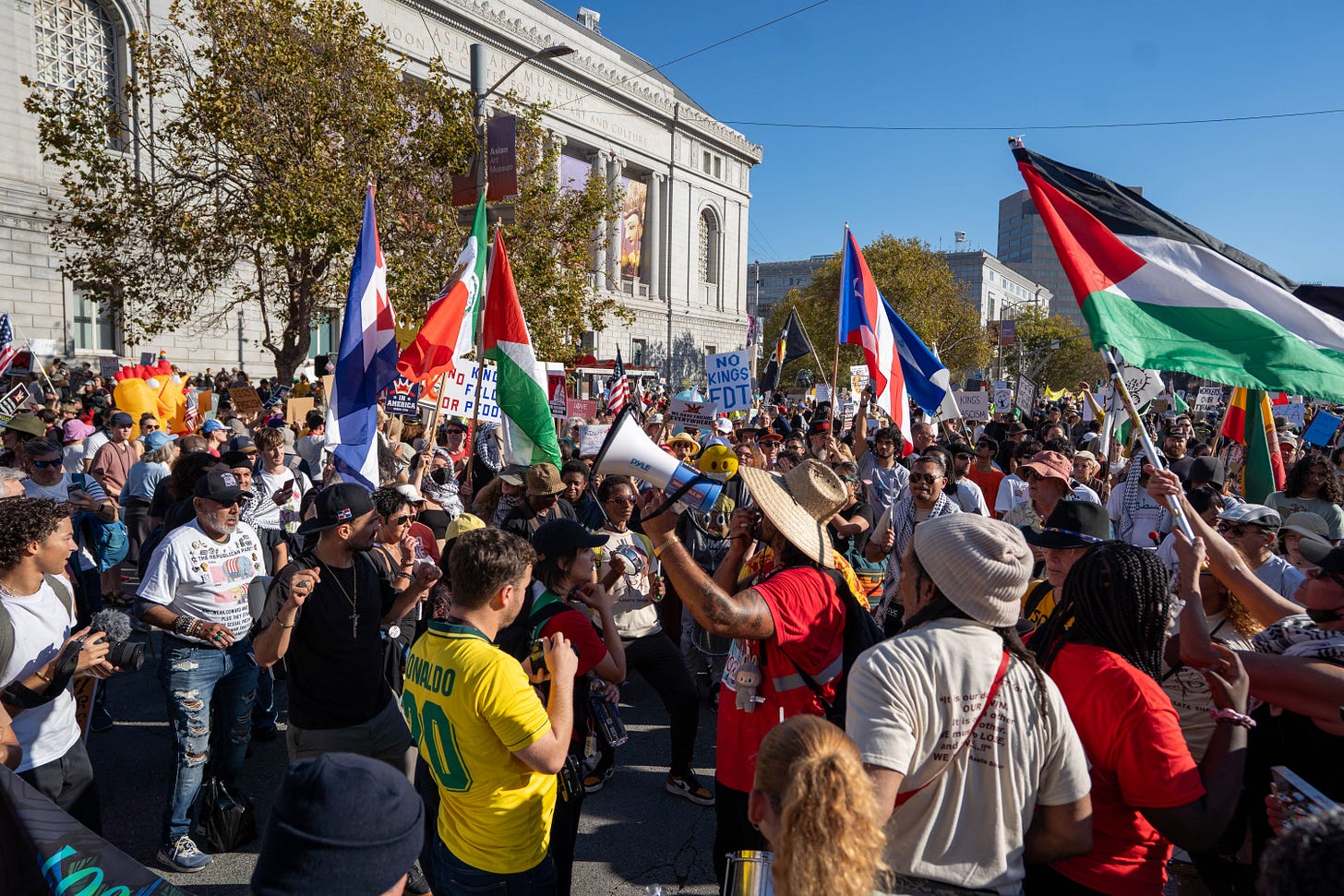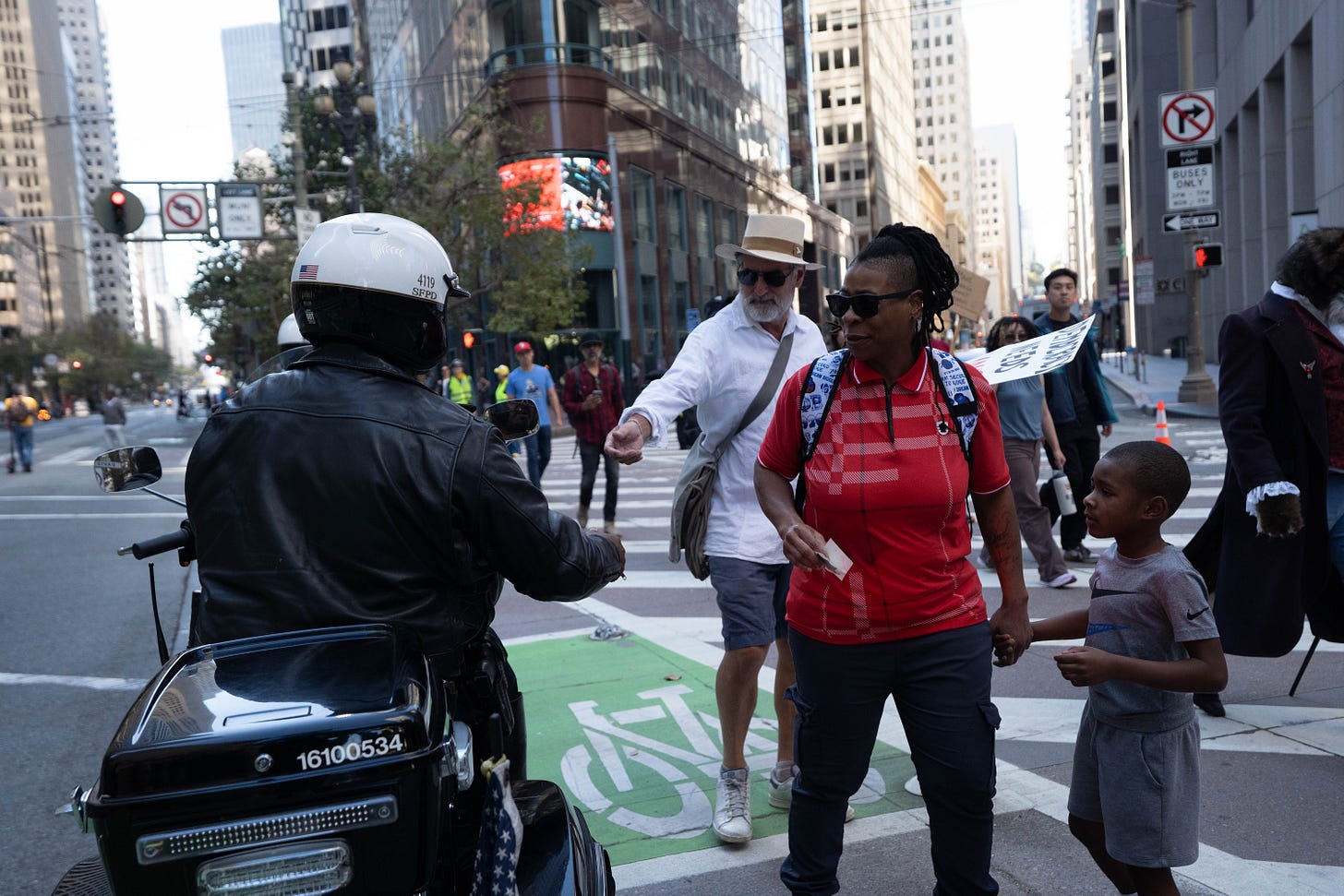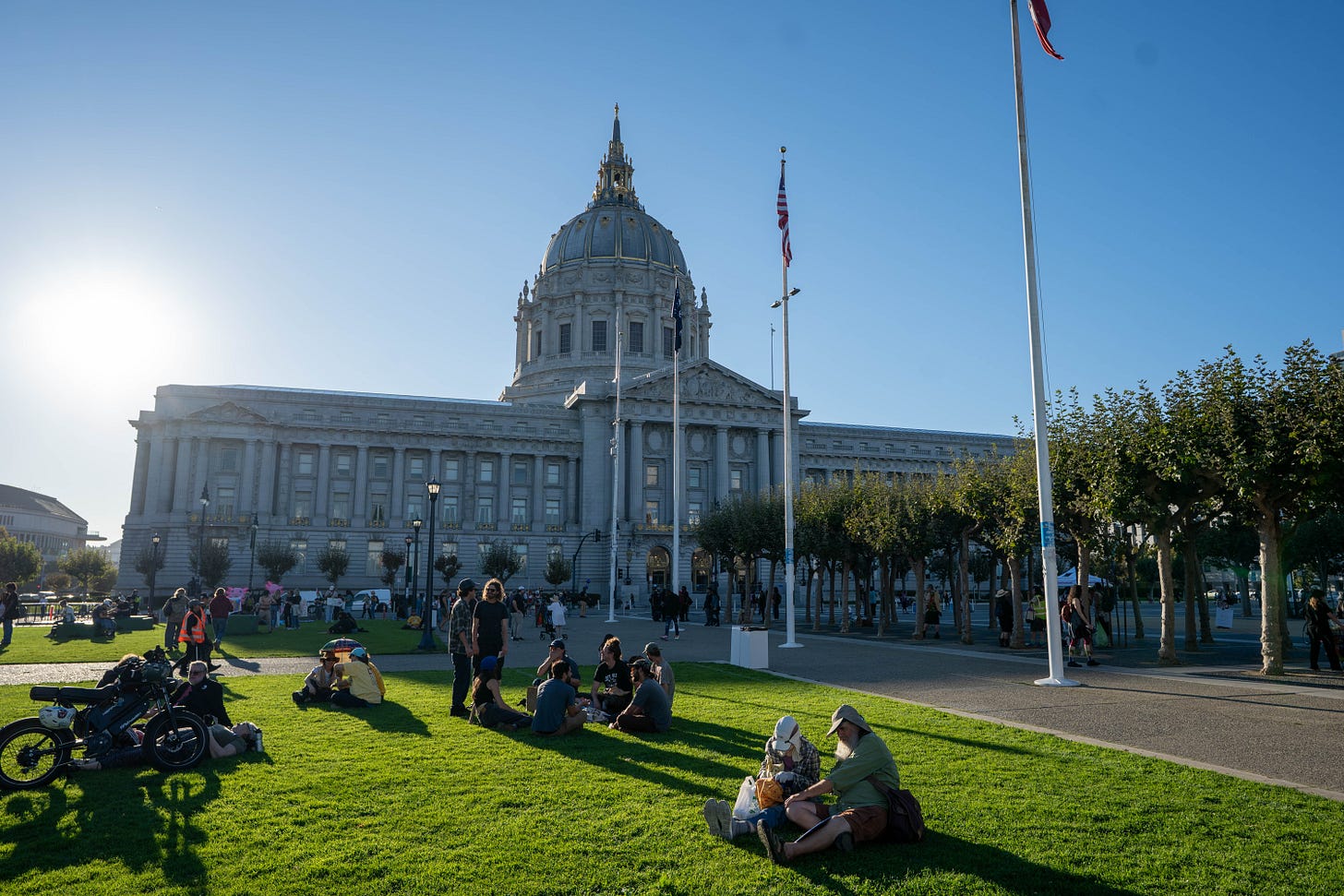Is No Kings the start of something bigger?
A day of disappointment and optimism
As I marched down Market street at the front of a 50k person procession, a clunky aphorism kept running through my mind. It was something an old Communist once said to me on a rooftop bar overlooking the Mekong River in Vientiane Laos. “The fall of the Soviet Union didn’t prove America’s virtue, it only proved that when two pathogens infect the same body, the most virulent will kill you first.” He was a chemist, not a virologist and more than a little drunk, but I understood what he meant. America, in his mind, was a stand-in for everything that’s dangerous about capitalism and damnit, as I watched tens of thousands of San Franciscans peacefully pass block after block of police cordons, I couldn’t help but think he might be right.
October 18th marked the second “No Kings” protest that spanned over 1700 cities across the country and brought millions to the streets, no small feat and laudable in and of itself. However, after spending the day milling around with organizers and protestors alike, I was more perplexed than I was before. Earlier this year, I’d covered the first “No Kings” rally in San Jose. Then, as now, I was skeptical that the movement could harness the prevailing discontent and turn it into something organized, but I still hoped that the collective energy might, at least this time, cohere into something unified. Instead, it still felt very much like the 18th Brumaire’s sack of potatoes.
Before the march from the Ferry Building to City Hall, protesters gathered on the beach to form human signs spelling out “NO KINGS” and “YES ON 50,” a reference to Proposition 50, which would allow the state legislature to gerrymander its own districts in response to Texas and other states trying to redistrict theirs. The crowd’s politics were as varied as the costumes, but the dominant sentiment was unmistakable, a broad, simmering anger at the lawlessness of the current president. Tens of thousands turned out, young, old, lots of old, workers, teachers, families with placards, anarchists, furries, a woman with birds on her head, Black Israelites, and hundreds wearing what has become the era’s chosen emblem of defiance: the inflatable frog suit. The media were there in droves as were some very SF personalities.
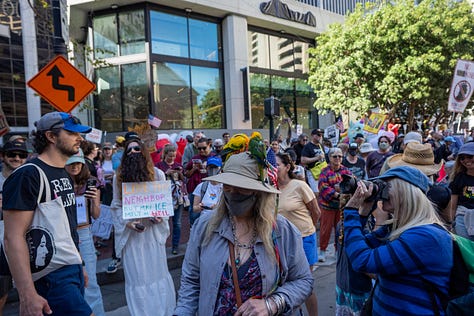
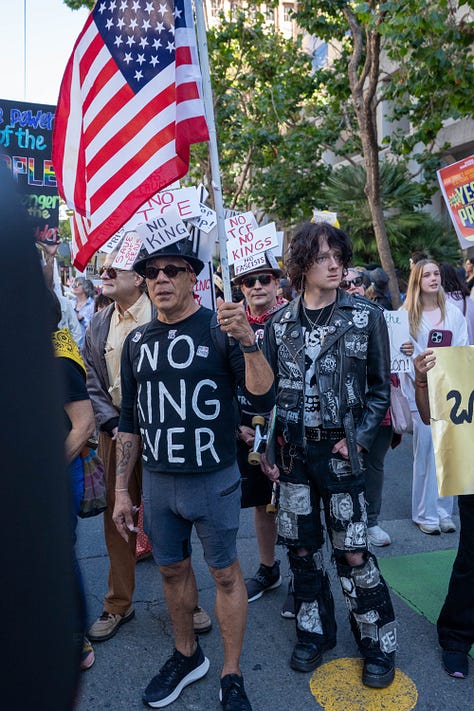
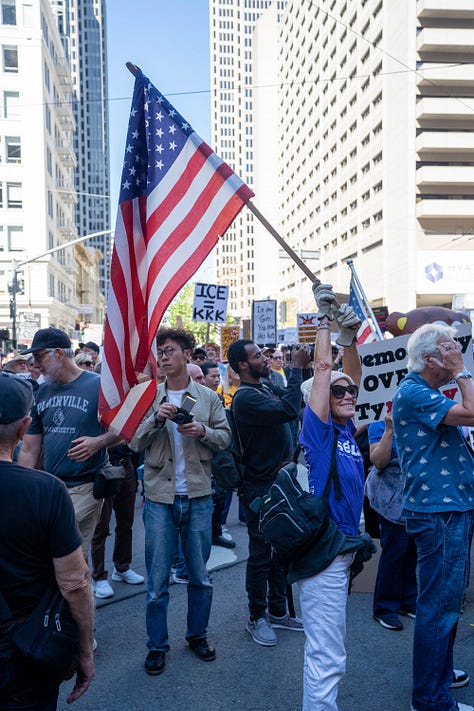
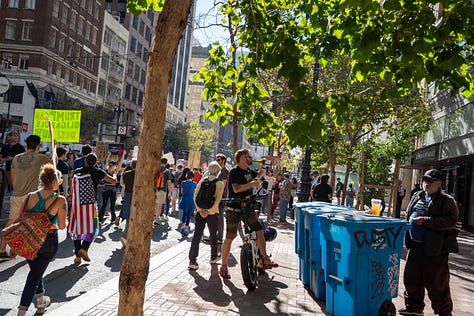
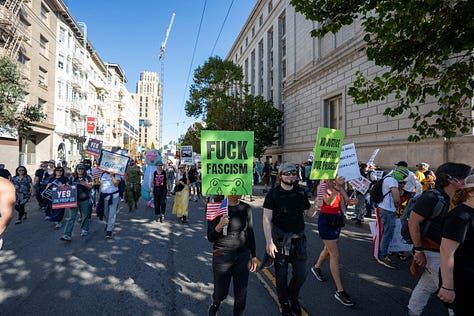
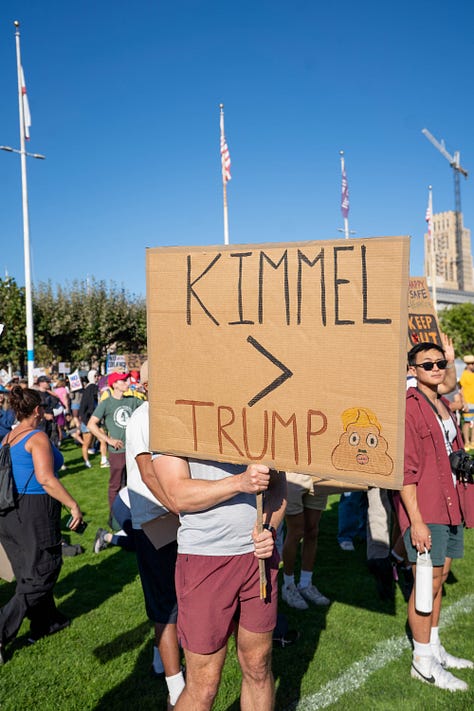
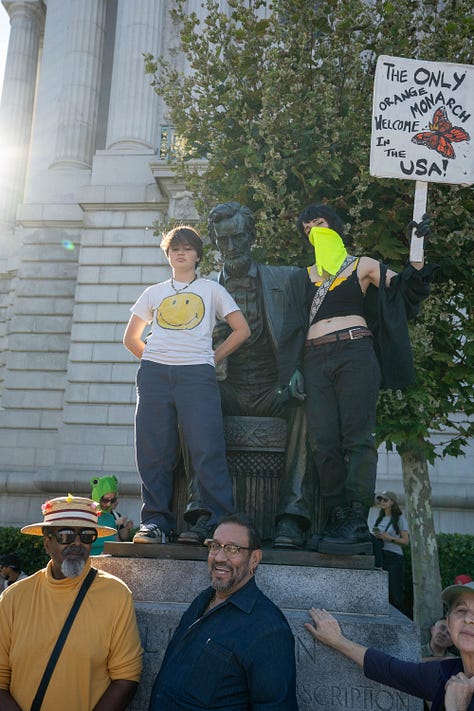
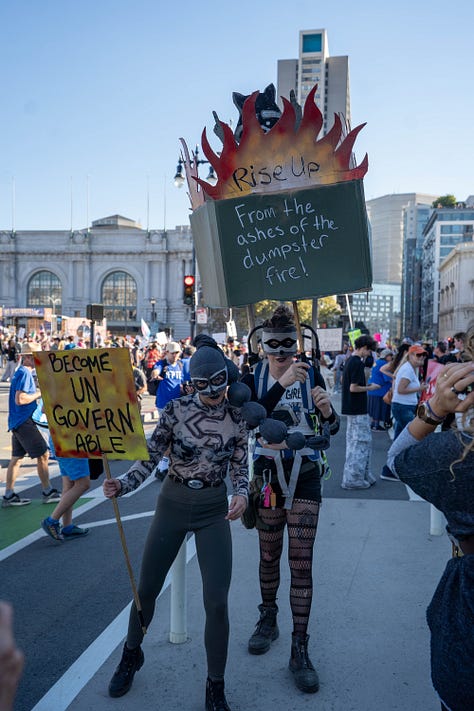
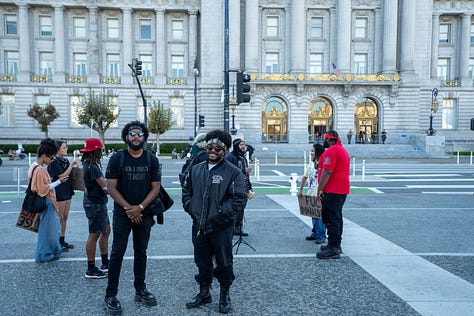
Unfortunately, the early carnivalesque energy died when those potatoes were never fully mashed together. The one spark of electricity I spotted came when a drumline flanked by flag bearers waving Palestinian, Nicaraguan, Puerto Rican, Mexican, and the Imperial Ethiopian flag ignored the minders’ directions to keep moving and instead stopped to play in the middle of the street. Instantly people from all around were pulled to the spot. The organizers in their red vests barked into their bullhorns but the impromptu show of resistance only ended when the drummers voluntarily moved on. That fleeting insubordination carried more charge than any of the day’s speeches. It was then that both my misgivings about the march, and my old comrade’s words felt confirmed.
The USSR experienced its share of mass protests, very few of which ended without bloodshed. Even if we set aside the not insignificant number of uprisings instigated by external powers i.e. the CIA, the genuine will of the people was often met with violent repression. This was because the Soviet state understood itself as the very embodiment of democratic resolve. In such a system, any apparent contradiction between the governors and the governed could not truly exist; if the Party represented the people, dissent could only be interpreted as anti-revolutionary or reactionary in nature and thus an existential threat.
Not so with America. Or at least, it hasn’t been so for a very long time. It may have been similar enough during the civil rights era, when the mere existence of Black Americans refusing the position of second-class citizens was seen as threatening to the nation’s social order. Now, however, the apparatus of government is so divorced from the will of the governed that protest exposes no contradiction at all. In fact, the state encourages dissent by providing “free speech zones,” which is all a cordoned-off march really is. Currently, both Democratic and Republican interests are capitalist interests, and if there is one thing capitalism excels at, it is co-opting dissent.
I think it was the subconscious recognition that their just rage was in the process of being sublimated that drained some of the life from the San Francisco protest. Unlike the Soviet Union, where protest was treated as a cancer to be violently excised, in America these kinds of protest function more like a booster shot, vaccinating the country against the real danger, direct action. We march, chant, and livestream, and the organism registers no fever. The cops smile and pass out stickers; the mayor issues a statement about civic engagement. The contagion of unrest never quite takes.
As I watched that drumline on McAllister, a small, defiant refusal to stay in line, I realized that was the closest thing we had to real political life: a brief flare of autonomy before absorption. Their rhythm cut across the official cadence of the march, disrupting the choreography of permission. For a few minutes, you could feel something like collective possibility, the kind that neither politburo nor PR team could manufacture or contain. Then, just as suddenly, it was gone, folded back into the parade of acceptable dissent, the music fading between police barricades.
Trump is very much positioning himself as a king ruling by fiat. And his thin skin may yet give these protests more meaning if he decides to try and crush them. And while irritating Trump is enough of a reason, beyond that, it’s hard to see what has been achieved. There was an opportunity once the crowd reached the green in front of City Hall, a moment before what little energy there was dissipated. They could have borrowed a few lessons from the Occupy movement: pull people into smaller circles, hold impromptu assemblies, invite strangers to speak and argue and plan. David Graeber, an American anthropologist, activist, and one of the intellectual architects of the Occupy movement routinely stressed that the power of Occupy didn’t lie in its slogans but in its process, in the lived experiment of horizontal democracy, the sense that collective decision-making was often more important than the decisions being made.
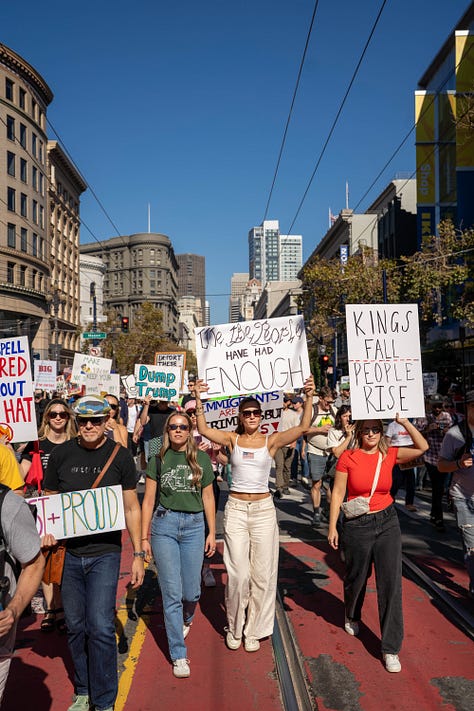
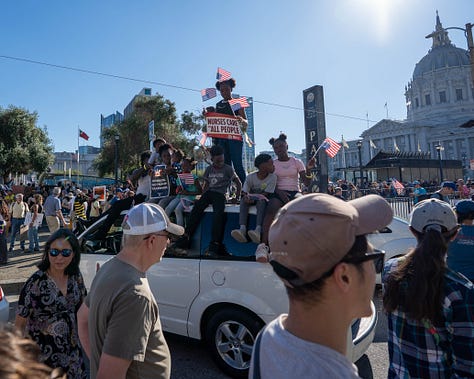
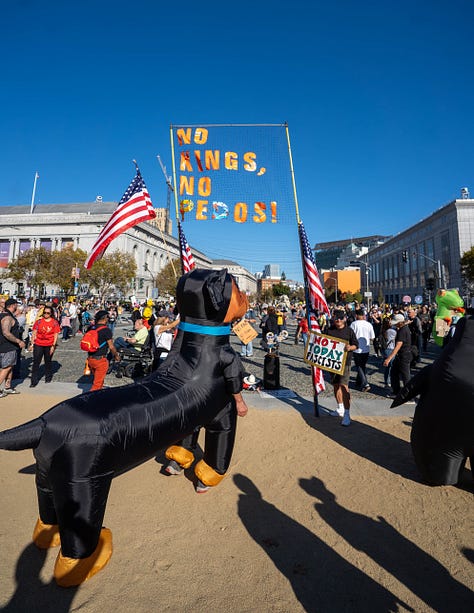
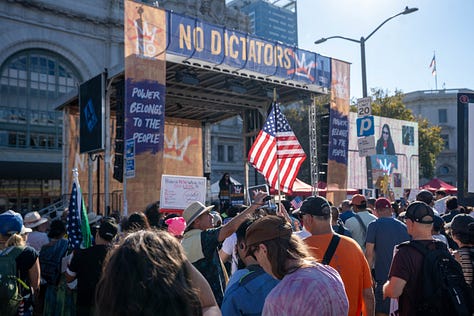
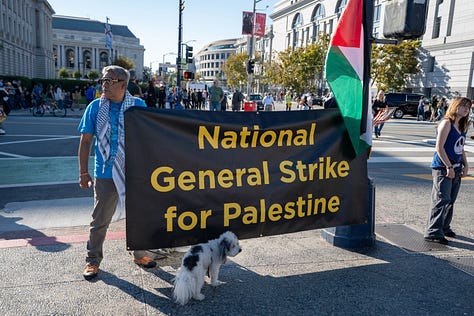
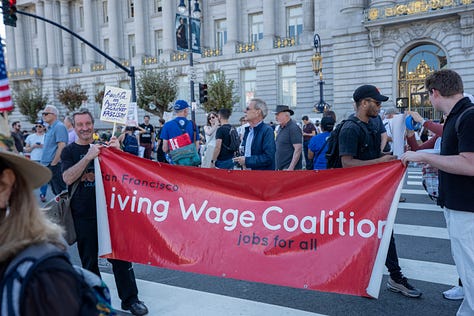
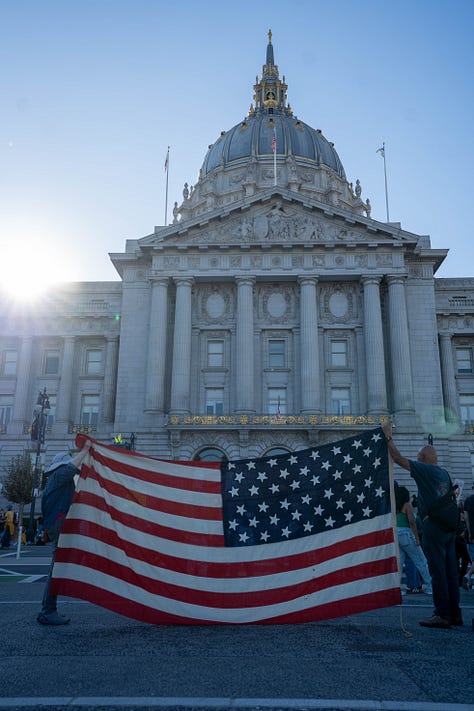
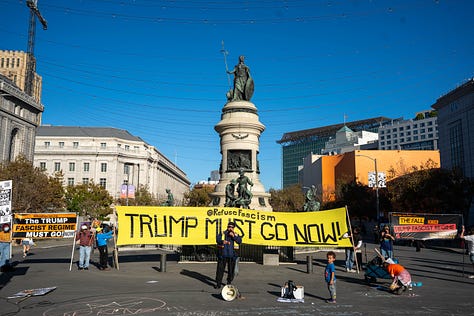
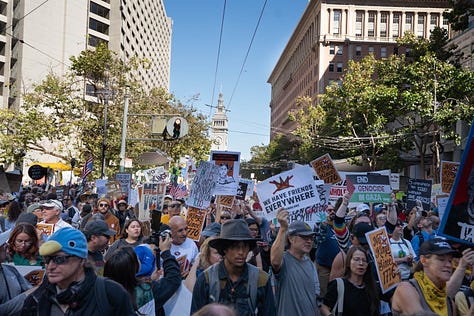
Instead, the “No Kings” march ended as it began: a managed procession, an exercise in permitted dissent. The crowd arrived, applauded, and dispersed. There was little effort to build anything beyond the moment, a cathartic spectacle that reaffirmed the very structures it set out to oppose. Though they did leave the area very clean.
Still, I can’t shake the image of that drumline, an accidental insurrection within an otherwise perfectly permitted demonstration. For a moment, the rhythm broke through the choreography and the crowd responded. It was chaotic, unbranded, unsanctioned, and therefore alive.
While establishment Democrats have embraced the “No Kings” rallies the people actually marching in them seem to be waking up to the fact that it was these very same Democrats who helped build the throne Trump currently sits on.
In a way, the guarded enthusiasm on display in San Francisco is heartening. It means that the people are growing tired of having their will contorted and their anger sublimated. The broader numbers seem to bare this out with the Democratic Party reaching historic low approval ratings and its leadership like Chuck Schumer somehow faring even worse.
While it’s disappointing that such a massive opportunity for organization and direct action was missed, that very failure could yet push people to reject stage-managed democracy—to embrace eruptions like that drumline, to stop behaving like an audience, and instead of simply chanting “No Kings,” to act as if there aren’t any. I think that’s a cure my old comrade would appreciate and perhaps it’s right around the corner.



